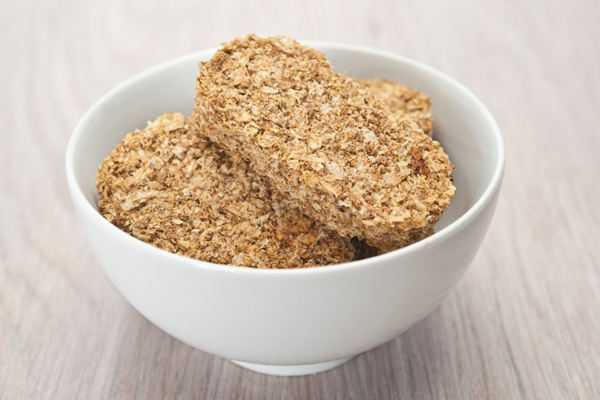A new study published in Frontiers in Nutrition reveals that dark chocolate, including organic varieties, commonly contains concerning levels of lead and cadmium, raising questions about long-term consumption risks and the need for improved industry practices.
Study on Heavy Metals in Chocolate
The study published in Frontiers in Nutrition provides comprehensive insights into the presence of lead and cadmium in dark chocolate products over an extended period. Researchers analyzed test results from ConsumerLab.com, examining 72 different dark chocolate products four times between 2014 and 2022. 1
The study's scope was broad, encompassing not only dark chocolate bars but also cocoa supplements, dark chocolate chips, cocoa mix, and cocoa powders. This wide range of products allowed for a more comprehensive understanding of heavy metal contamination across various chocolate-based items. 1
One of the key findings was that the average lead and cadmium levels in the tested products exceeded the threshold based on California's Proposition 65 maximum allowable dose level (MADL). For lead, this level is 0.5 micrograms per day, while for cadmium, it's 4.1 micrograms per day. It's important to note that California's standard is one of the strictest available for heavy metals in food. 1
However, the study revealed that the high average levels were largely due to heavily contaminated outliers. Many products tested did not exceed these levels, indicating significant variability in contamination across different chocolate products. 1
A crucial aspect of this study is its longitudinal nature. By beginning their testing in 2014, the researchers demonstrated that heavy metal contamination in chocolate has been an ongoing issue for years, predating more recent public awareness. This historical context adds significant value to the findings and underscores the persistent nature of this problem. 1
Interestingly, the study found no significant differences in heavy metal levels from year to year, suggesting that contamination levels have remained relatively stable over time. This observation is corroborated by Eric Boring, a chemist at Consumer Reports, who noted that lead and cadmium levels haven't changed much from 2014 to their most recent study in 2023. 1
The research also explored whether certifications like "Non-GMO" or "Fair Trade" had any impact on heavy metal levels, but found no meaningful differences. However, a notable discovery was that organic chocolate products consistently showed higher levels of heavy metals compared to non-organic varieties. While this difference was subtle, it was consistent across the study period. 1
This finding challenges the common assumption that organic products are inherently safer or healthier. The researchers speculate that this could be due to differences in processing methods rather than the use of pesticides, as organic farming practices prohibit synthetic pesticides. 1
Overall, this study provides valuable long-term data on heavy metal contamination in chocolate, highlighting the need for continued monitoring and potential interventions in chocolate production processes to reduce these contaminants.
Sources:
Sources of Contamination
The presence of lead and cadmium in chocolate, particularly in organic varieties, raises questions about the sources of contamination. While the exact mechanisms are not fully understood, several factors contribute to the presence of these heavy metals in chocolate products.
Contrary to what might be expected, the study suggests that pesticides are likely not the main contributor to heavy metal contamination in chocolate. 1 This conclusion is drawn from the finding that organic chocolate products, which are produced without synthetic pesticides, tend to have higher levels of heavy metals overall compared to non-organic varieties. 1
Lead contamination often occurs post-harvest, according to previous research. 1 For example, lead-containing dust can accumulate on cacao pods during processing. This suggests that environmental factors and handling practices play a significant role in lead contamination.
The higher levels of heavy metals in organic chocolate products may be related to differences in processing methods. Dr. Leigh Frame, the study's senior author, speculates that gentler processing techniques used in organic chocolate production might create more opportunities for lead pollution to accumulate on cacao beans. 1 This could involve leaving beans to dry outside for longer periods or using different cleaning methods that may be less effective at removing lead.
Cadmium contamination, on the other hand, is often linked to soil conditions. Cacao trees can absorb cadmium from the soil, which then accumulates in the beans. Factors such as soil pH, organic matter content, and the presence of other minerals can influence cadmium uptake by the plants.
The study's findings highlight the complexity of heavy metal contamination in chocolate production. It's not simply a matter of organic versus conventional farming practices, but rather a combination of environmental factors, processing methods, and potentially regional variations in soil composition.
It's important to note that while the study provides valuable insights, more research is needed to fully understand the specific sources and mechanisms of heavy metal contamination in chocolate production. This knowledge is crucial for developing effective strategies to reduce contamination levels and ensure the safety of chocolate products for consumers.
Sources:
Health Risks of Lead and Cadmium
Lead and cadmium are toxic heavy metals that can pose significant health risks when consumed, even in small amounts over time. Exposure to these metals through chocolate consumption is particularly concerning due to their potential to accumulate in the body and cause long-term health effects.
Lead exposure can have severe consequences, especially for children and pregnant women. Even low levels of lead can affect brain development, leading to reduced IQ, behavioral problems, and learning difficulties in children 1. In adults, chronic lead exposure has been linked to increased risk of hypertension, kidney damage, and reproductive issues 1.
Cadmium, while less well-known than lead, is also a potent toxin. Long-term exposure to cadmium has been associated with kidney damage, bone fragility, and increased risk of certain cancers 1. The body has difficulty eliminating cadmium, which means it can accumulate over time, potentially causing harm even at low exposure levels.
The risk of heavy metal toxicity from chocolate depends on various factors, including the frequency of consumption, the specific products consumed, and individual susceptibility. While occasional chocolate consumption is unlikely to cause immediate health problems, regular intake of contaminated products could contribute to cumulative exposure over time 1.
It's important to note that the health risks associated with lead and cadmium in chocolate should be considered in the context of overall dietary exposure. As the study points out, other foods like sweet potatoes, carrots, and spinach can also contain these metals 1. This underscores the importance of a varied diet to minimize exposure from any single source.
For vulnerable populations, such as children and pregnant women, the potential risks are more significant. The developing brains and bodies of fetuses and young children are particularly susceptible to the neurotoxic effects of lead 1. Therefore, these groups may need to be more cautious about their chocolate consumption, especially of dark chocolate products which tend to have higher levels of heavy metals.
While the study's findings are concerning, they should not cause panic among chocolate lovers. As Dr. Leigh Frame, the study's senior author, emphasizes, moderate consumption of chocolate can still be part of a healthy diet 1. However, consumers should be aware of these potential risks and take steps to minimize their exposure, particularly if they are frequent chocolate eaters or belong to a vulnerable group.
Sources:
Consumer Recommendations
While the presence of lead and cadmium in chocolate is concerning, consumers can take steps to minimize their exposure without completely giving up this beloved treat. Moderation is key when it comes to chocolate consumption, especially for dark chocolate which tends to have higher levels of heavy metals. 1
For those who enjoy chocolate regularly, varying brands and types can help limit exposure to any single source of contamination. This is particularly important if a specific brand consistently shows higher levels of heavy metals. 1
Consumers should pay special attention to their chocolate intake if they belong to high-risk groups. These include children, pregnant women, and individuals who may have other sources of heavy metal exposure in their environment. 1 Parents should be especially mindful of their children's chocolate consumption, as kids are more vulnerable to the effects of heavy metals due to their developing bodies and smaller size.
It's important to note that while organic chocolate showed higher levels of heavy metals in the study, this doesn't necessarily mean all organic products are more contaminated. Consumers who prefer organic chocolate should not panic but may want to be more selective in their choices and perhaps consume it less frequently. 1
For those concerned about their heavy metal intake, consulting Consumer Reports' past test results can help in choosing products with lower levels of lead and cadmium. This is particularly useful for daily chocolate consumers. 1
Remember that chocolate is just one potential source of heavy metal exposure in a typical diet. Other foods like sweet potatoes, carrots, and spinach can also contain these metals. Therefore, maintaining a varied diet can help distribute and potentially reduce overall heavy metal intake. 1
Lastly, while it's important to be aware of these findings, experts emphasize that there's no need for panic. As Leigh Frame, senior author of the study, states, "I eat chocolate. I ate chocolate last night." 1 The key is to enjoy chocolate mindfully and in moderation as part of a balanced diet.
Sources:














Member discussion